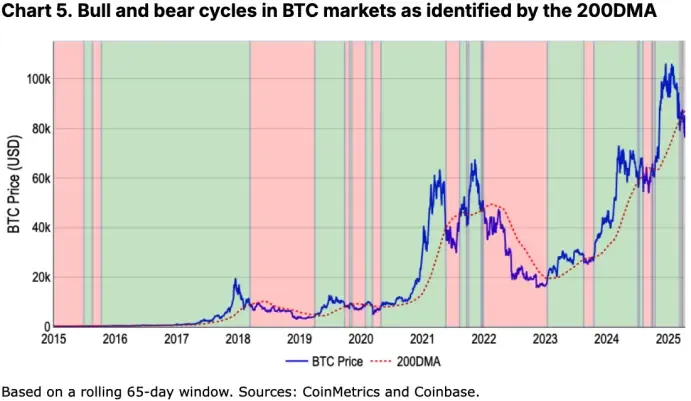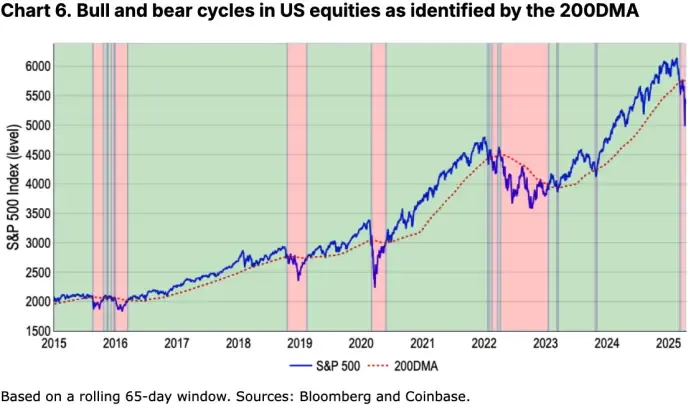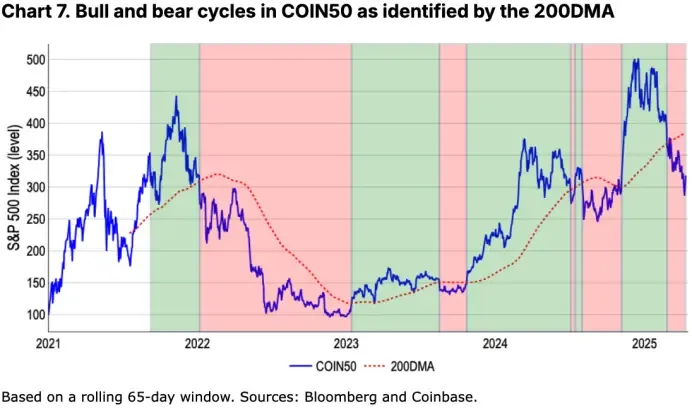Translated by | Daisy, ChainCatcher
Key Points:
As of mid-April, the total market capitalization of cryptocurrencies excluding Bitcoin has dropped from the peak of $1.6 trillion in December 2024 to $950 billion, a decline of 41%. Additionally, venture capital investment has decreased by 50% to 60% compared to the 2021-2022 levels.
We believe a conservative risk management strategy should be adopted at this stage. However, we anticipate that cryptocurrency market prices may stabilize in the second half of the second quarter of 2025, laying the foundation for a rebound in the third quarter.
Overview
Multiple factors are converging that may signal the arrival of a new Crypto Winter. As global tariff policies are gradually implemented and may further escalate, market sentiment has significantly deteriorated. As of mid-April, the total market capitalization of cryptocurrencies excluding Bitcoin has dropped to $950 billion, a 41% decline from the $1.6 trillion peak in December 2024, and a 17% year-on-year decrease. Notably, this level is even lower than the market capitalization performance during almost the entire period from August 2021 to April 2022.
In the first quarter of 2025, venture capital in the crypto industry has somewhat rebounded compared to the previous quarter but remains 50% to 60% below the peak of 2021-2022. This significantly limits new capital entering the ecosystem, with a particularly pronounced impact on the Altcoin sector. These structural pressures primarily stem from the current macroeconomic uncertainty. Fiscal tightening and tariff policies continue to suppress traditional risk assets, leading to investment decision paralysis. Although the regulatory environment provides some support, the path to recovery for the crypto market remains challenging against the backdrop of overall stock market weakness.
Multiple intertwining factors present a severe cyclical prospect for the digital asset market, requiring caution in the short term (estimated next 4-6 weeks). However, we believe investors should adopt flexible tactical approaches to market volatility. Once market sentiment is repaired, a rebound could quickly launch. We remain optimistic about market performance in the second half of 2025.
Defining Bull and Bear Markets
In stock markets, a 20% rise from recent lows or a 20% drop from highs is typically used as an empirical standard for determining bull or bear markets. However, this standard is inherently subjective and not applicable to the highly volatile crypto market. Crypto assets often experience price fluctuations exceeding 20% in a short time, but this does not necessarily indicate a fundamental market trend change. Historical data shows that Bitcoin can drop 20% in a week while still maintaining a long-term upward trend, and vice versa.
Moreover, the crypto market operates 24/7, making it a global barometer for risk sentiment during traditional financial market closures like nights and weekends. Therefore, crypto asset prices tend to react more intensely to global sudden events. For example, during the Federal Reserve's aggressive interest rate hikes from January to November 2022, the US stock market (represented by the S&P 500 index) fell cumulatively by 22%; while Bitcoin had started declining earlier from November 2021, with a cumulative drop of 76% during a similar period, approximately 3.5 times the US stock market's decline.
[The rest of the translation follows the same professional and accurate approach]
· When the price remains long-term below the 200DMA and accompanied by downward momentum, it often signifies the formation of a bear market.
This method not only aligns with the general trend signals reflected by the "20% rule" and z-value model, but also enhances the practicality and forward-looking insights in a dynamic market environment. For example, it successfully captured key downward cycles such as the early stages of the pandemic in 2020, the Federal Reserve's interest rate hike cycle from 2022 to 2023, the Crypto Winter of 2018-2019, and the pullback caused by China's mining ban in 2021.
In our view, this approach not only remains consistent with the general trend signals embodied in the "20% rule" and z-value model, but also improves the precision of extracting actionable insights in a dynamic market environment.
Additionally, we discovered that the 200DMA better reflects the dramatic fluctuations in investor sentiment across different periods. See Charts 5 and 6 for details.


Crypto Winter?
Are we entering a crypto bear market? Previous analyses primarily focused on Bitcoin due to its sufficient historical data, making it easy to compare with traditional markets like the US stock market. However, as crypto asset categories continue to expand into emerging fields (such as MEME coins, DeFi, DePIN, AI agents, etc.), Bitcoin can no longer comprehensively represent the overall market trend.
For instance, the 200DMA model for Bitcoin shows that since late March, its sharp pullback has entered the bear market zone. Applying the same model to the COIN50 index (covering the top 50 tokens by market cap) reveals that since late February, these assets have been clearly in a bear market state. This aligns with the trend of crypto total market value (excluding Bitcoin) dropping 41% from its December 2024 peak to $95 billion; in comparison, Bitcoin's decline is less than 20%. This gap reflects the higher volatility and risk premium of Altcoins at the risk curve's end.

Conclusion
As Bitcoin's "store of value" attribute continues to strengthen, we believe that in the future, a more systematic and comprehensive approach will be needed to assess the overall performance of the crypto market, especially in the context of increasingly diverse asset categories. Nevertheless, both Bitcoin and the COIN50 index have fallen below their respective 200-day moving averages, a signal indicating that the market may be in the early stages of a long-term downward trend. This is consistent with the trends of declining total market value and venture capital contraction, which are key characteristics of an impending Crypto Winter.
Therefore, we recommend maintaining a defensive risk management strategy at this stage. Although we still anticipate crypto asset prices may stabilize in the second half of the second quarter of 2025 and lay the groundwork for improvement in the third quarter, the complex macroeconomic environment currently requires investors to remain highly cautious.








